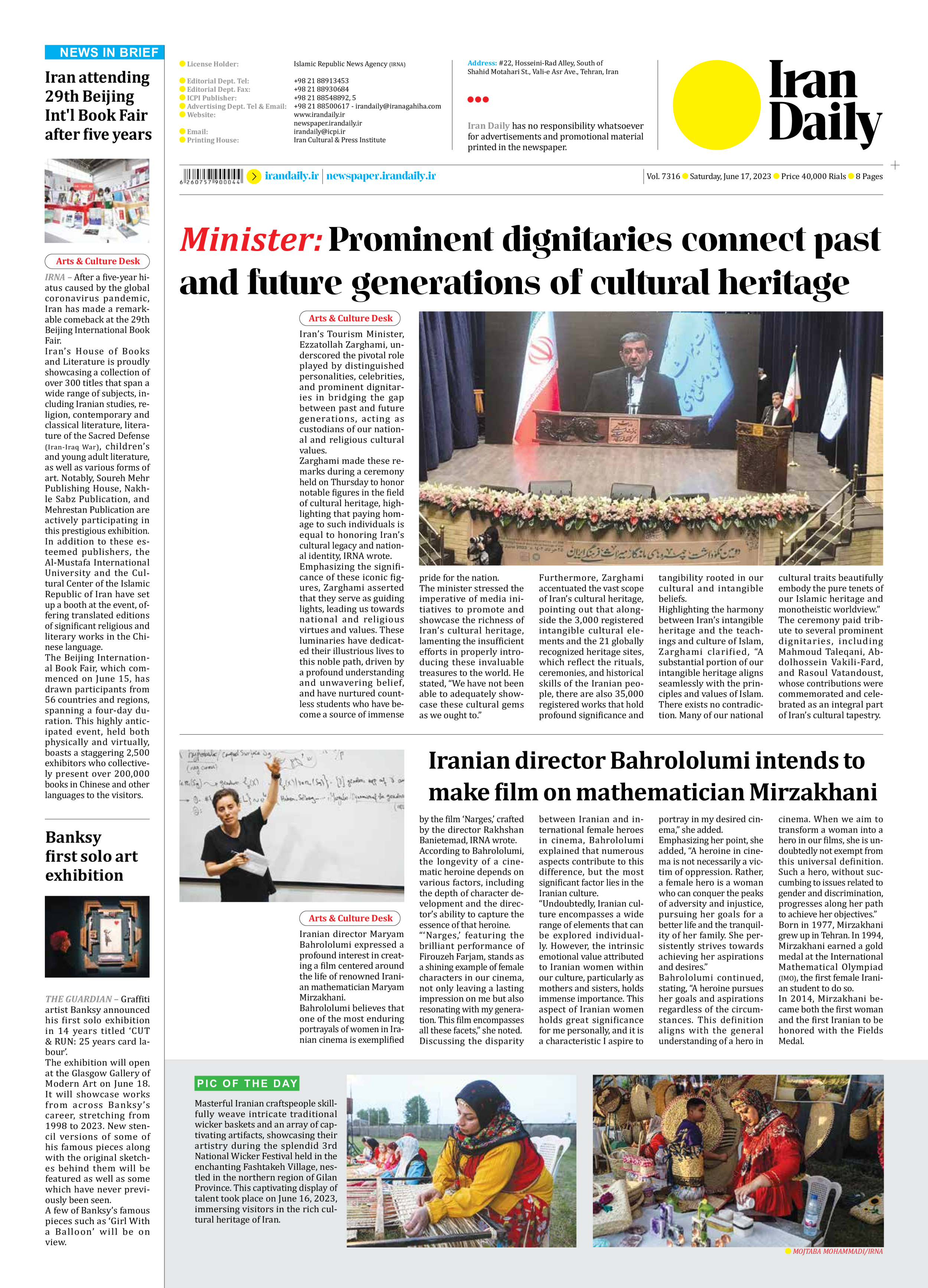
Minister: Prominent dignitaries connect past and future generations of cultural heritage
Iran’s Tourism Minister, Ezzatollah Zarghami, underscored the pivotal role played by distinguished personalities, celebrities, and prominent dignitaries in bridging the gap between past and future generations, acting as custodians of our national and religious cultural values.
Zarghami made these remarks during a ceremony held on Thursday to honor notable figures in the field of cultural heritage, highlighting that paying homage to such individuals is equal to honoring Iran’s cultural legacy and national identity, IRNA wrote.
Emphasizing the significance of these iconic figures, Zarghami asserted that they serve as guiding lights, leading us towards national and religious virtues and values. These luminaries have dedicated their illustrious lives to this noble path, driven by a profound understanding and unwavering belief, and have nurtured countless students who have become a source of immense pride for the nation.
The minister stressed the imperative of media initiatives to promote and showcase the richness of Iran’s cultural heritage, lamenting the insufficient efforts in properly introducing these invaluable treasures to the world. He stated, “We have not been able to adequately showcase these cultural gems as we ought to.”
Furthermore, Zarghami accentuated the vast scope of Iran’s cultural heritage, pointing out that alongside the 3,000 registered intangible cultural elements and the 21 globally recognized heritage sites, which reflect the rituals, ceremonies, and historical skills of the Iranian people, there are also 35,000 registered works that hold profound significance and tangibility rooted in our cultural and intangible beliefs.
Highlighting the harmony between Iran’s intangible heritage and the teachings and culture of Islam, Zarghami clarified, “A substantial portion of our intangible heritage aligns seamlessly with the principles and values of Islam. There exists no contradiction. Many of our national cultural traits beautifully embody the pure tenets of our Islamic heritage and monotheistic worldview.”
The ceremony paid tribute to several prominent dignitaries, including Mahmoud Taleqani, Abdolhossein Vakili-Fard, and Rasoul Vatandoust, whose contributions were commemorated and celebrated as an integral part of Iran’s cultural tapestry.







